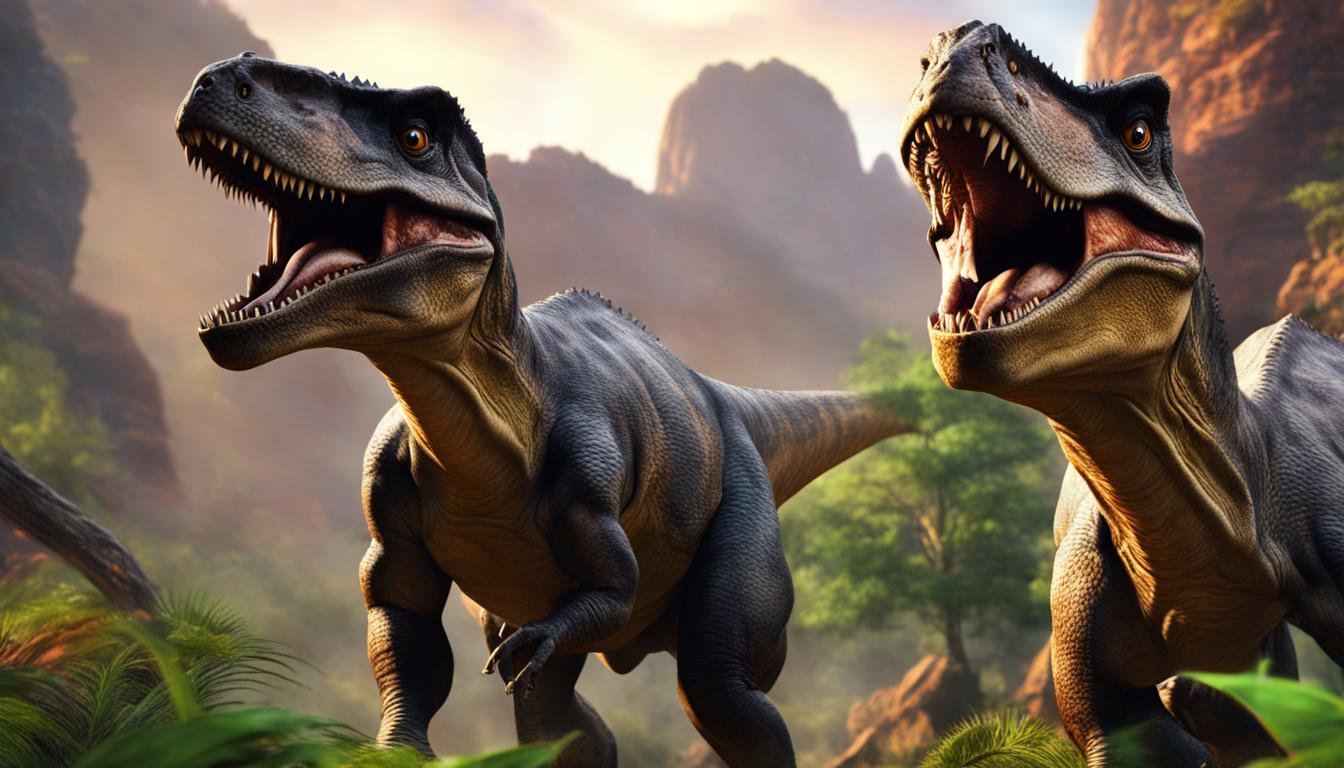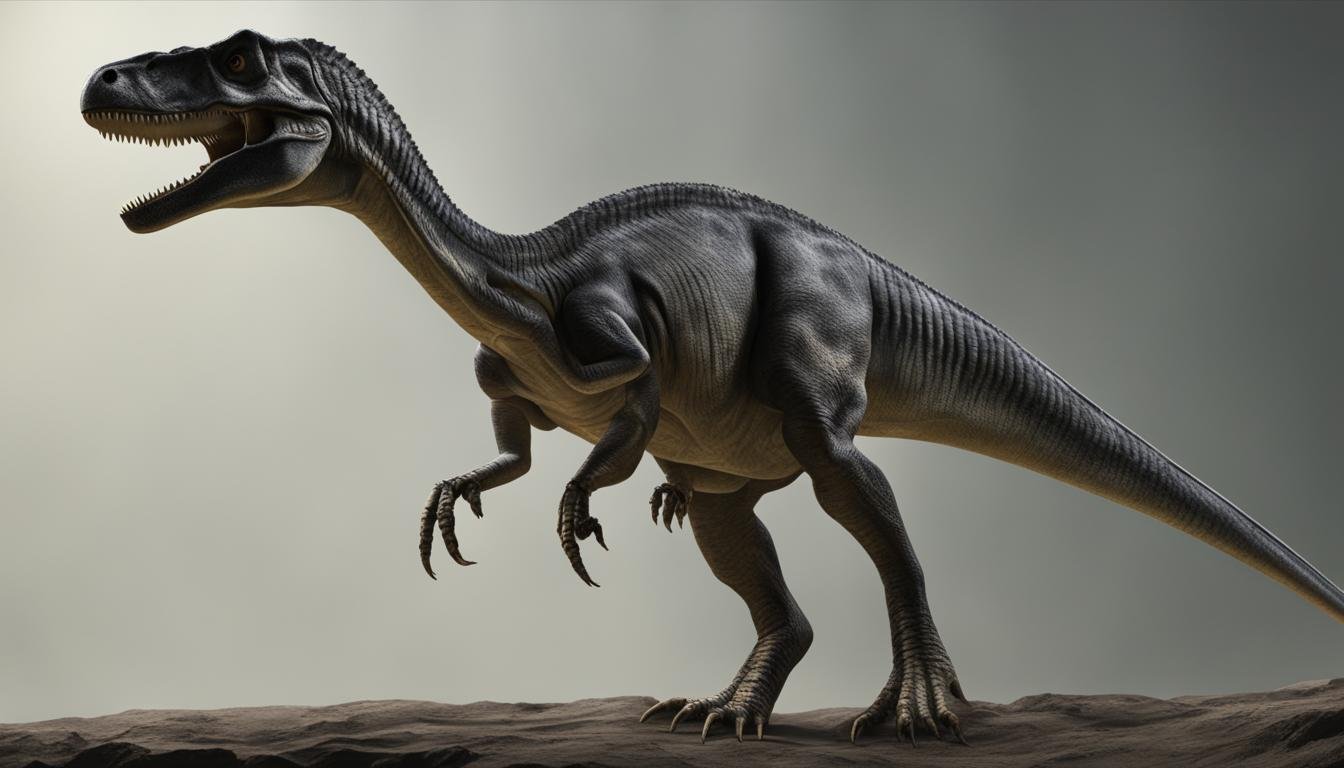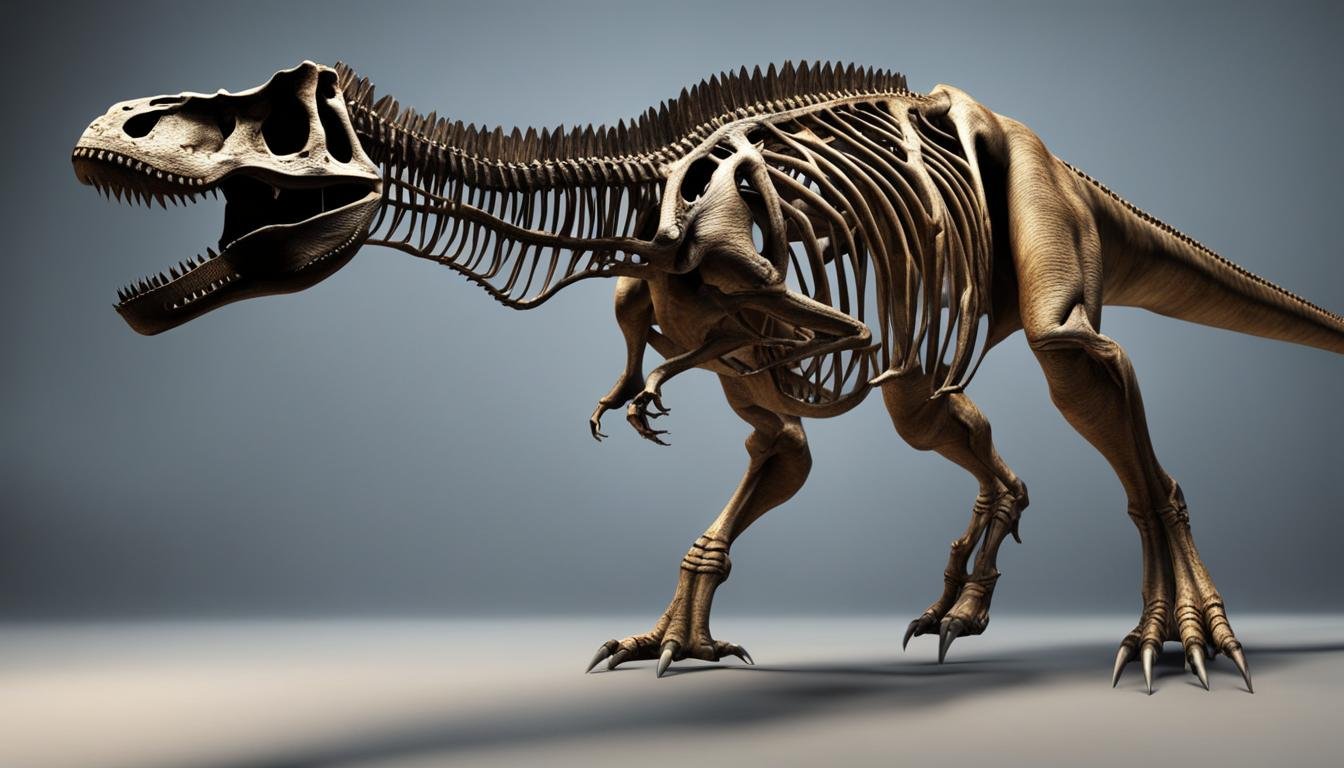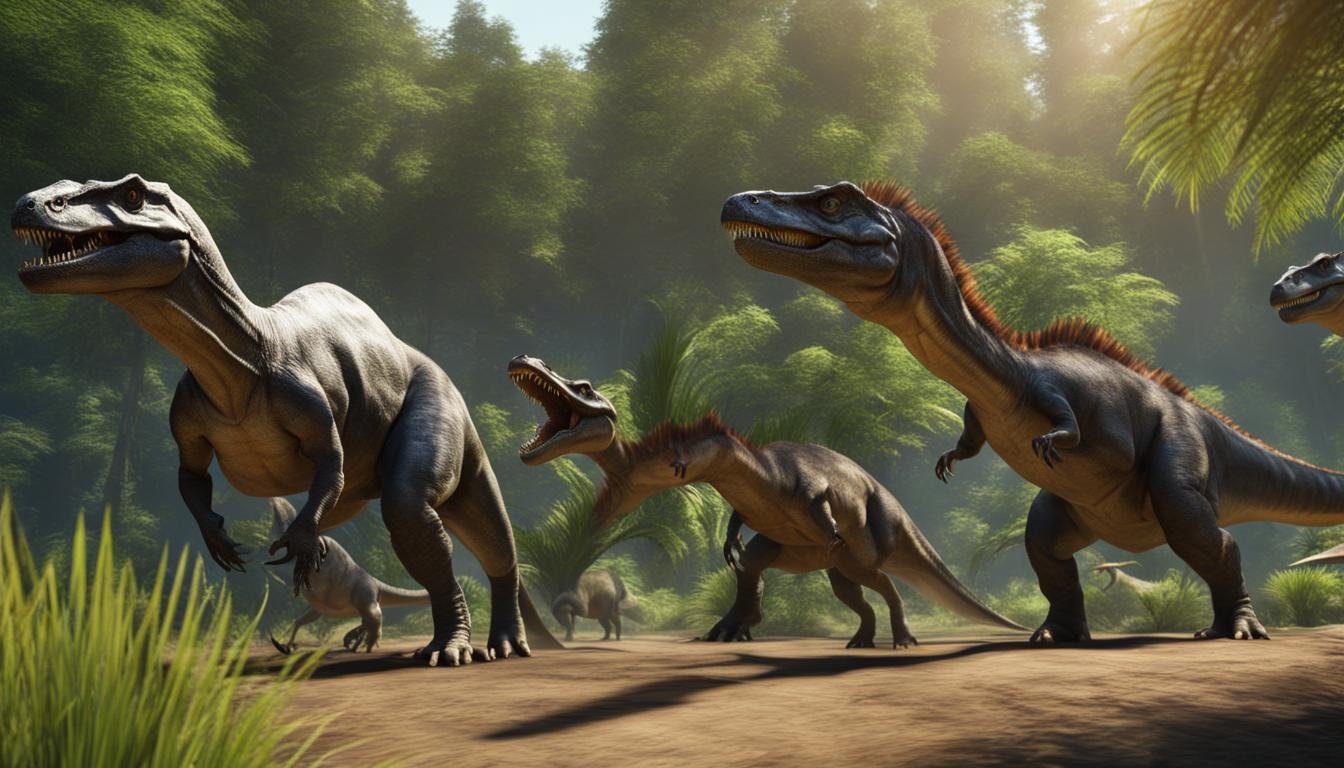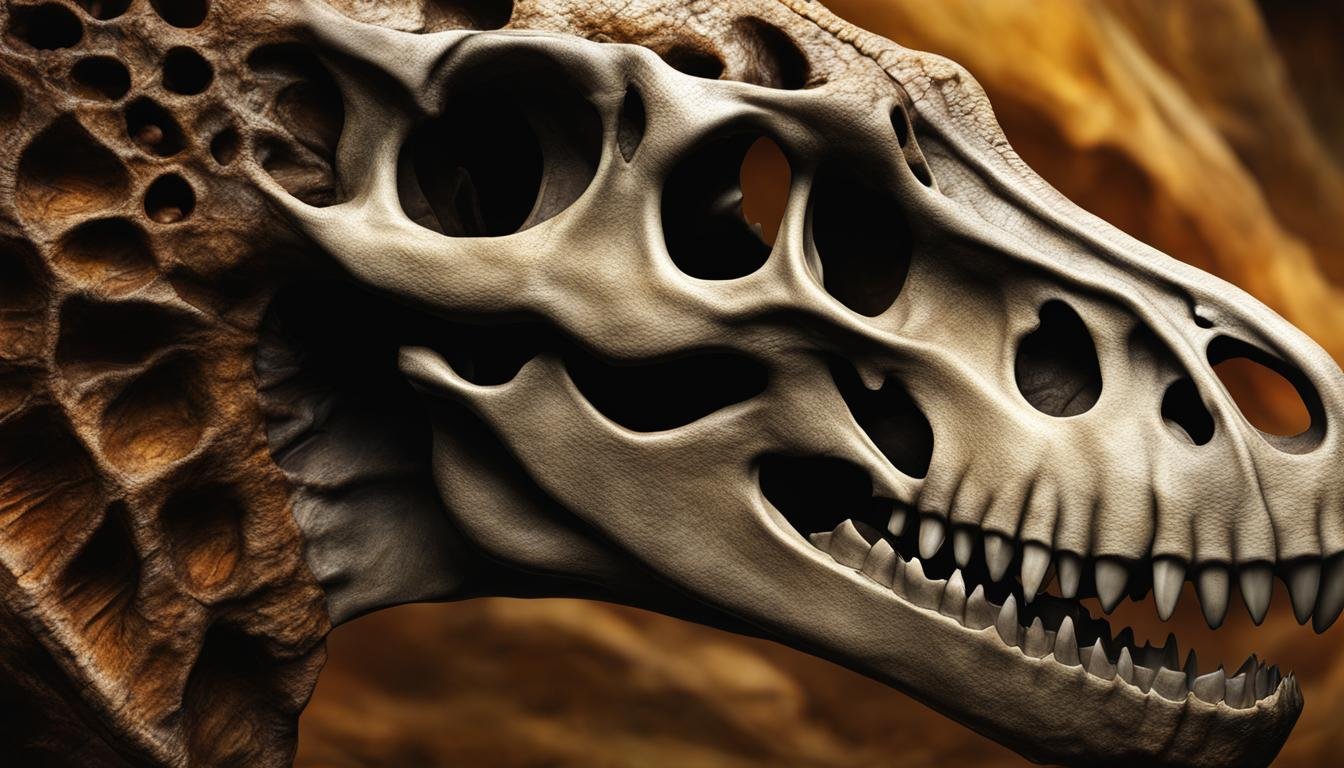Welcome to our exploration of the fascinating world of dinosaur vision! In this article, we will dive deep into the vision and eye structure of these magnificent creatures that once roamed the Earth. From their diverse visual capabilities to the anatomical features that shaped their sight, we will uncover the secrets hidden within the fossil record. So, let’s embark on this prehistoric journey and shed light on how dinosaurs viewed the world around them.
Binocular Vision in Dinosaurs
Visual Acuity and Optic Nerve
Binocular vision played a significant role in the visual capabilities of dinosaurs. Coelurosaurs and deinonychosaurs, such as Velociraptor, possessed good binocular vision, allowing for a wide binocular field of up to 60°. This enabled them to have better depth perception and accurately judge distances. Just like in modern humans, binocular vision in dinosaurs was achieved through the convergence of the two eyes, which created a single, unified image.
Retina and Visual Field
The retina, a key component of the eye, was responsible for transmitting visual signals to the brain. In dinosaurs, the retina likely had specialized cells called rod cells and cone cells. Rod cells are sensitive to low light conditions, indicating that some dinosaurs may have had adaptations for nocturnal vision. Cone cells, on the other hand, are responsible for color vision and greater visual acuity in bright light conditions, suggesting that some dinosaurs were diurnal.
| Dinosaur Species | Vision Adaptations |
|---|---|
| Coelurosaurs and deinonychosaurs | Wide binocular vision |
| Nocturnal dinosaurs | Large eyes with rod cell adaptations |
| Diurnal dinosaurs | Higher density of cone cells |
Binocular Vision and Hunting
Binocular vision was particularly advantageous for hunting dinosaurs. By having overlapping visual fields, dinosaurs with binocular vision could accurately spot and track their prey. This improved their chances of successful hunting by allowing them to focus their attention on a specific target and execute precise movements. Binocular vision also provided an advantage in detecting potential threats and navigating complex environments, contributing to the survival and predatory success of certain dinosaur species.
Nocturnal and Diurnal Vision in Dinosaurs
Some dinosaurs had adaptations for nocturnal or diurnal vision, allowing them to thrive in different light conditions. Nocturnal dinosaurs, such as Stenonychosaurus, were active at night and had large eyes that provided good night vision. They likely had a higher density of rod cells in their retinas, which are more sensitive to low light conditions. This adaptation allowed them to navigate and hunt in the darkness with greater ease.
On the other hand, diurnal dinosaurs were active during the day and had adaptations for bright light conditions. They had a higher density of cone cells in their retinas, which are responsible for color vision and greater visual acuity in well-lit environments. These adaptations allowed diurnal dinosaurs to see a wider spectrum of colors and efficiently identify potential prey or threats.
It is important to note that not all dinosaurs were strictly nocturnal or diurnal. Some may have had intermediate visual adaptations, allowing them to be active during both day and night. The evolutionary development of nocturnal and diurnal vision in dinosaurs played a crucial role in their ability to survive and thrive in different environments.
Comparison of Rod and Cone Cells in Nocturnal and Diurnal Dinosaurs
| Nocturnal Dinosaurs | Diurnal Dinosaurs | |
|---|---|---|
| Rod Cells | Higher density for improved night vision | Lower density for daytime vision |
| Cone Cells | Lower density for color vision | Higher density for enhanced visual acuity |
The table above provides a comparison of rod and cone cells in nocturnal and diurnal dinosaurs. Nocturnal dinosaurs had a higher density of rod cells, which allowed for better night vision but reduced color vision and visual acuity in daylight. Diurnal dinosaurs, on the other hand, had a lower density of rod cells and a higher density of cone cells, which provided enhanced color vision and improved visual acuity in well-lit conditions.
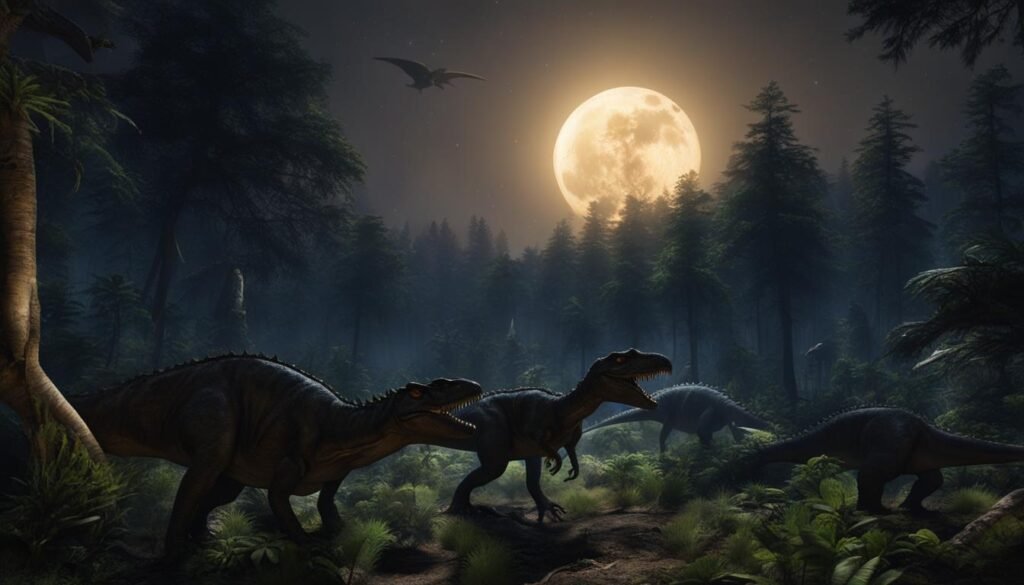
Some dinosaurs were adapted for nocturnal vision, with large eyes and a higher density of rod cells in the retina. Others were adapted for diurnal vision, with a higher density of cone cells for enhanced color vision and visual acuity in bright light. These adaptations allowed different species of dinosaurs to thrive in various light conditions and environments.
Eye Anatomy and Structure in Dinosaurs
The eye structure of dinosaurs was similar to that of modern reptiles and birds. It consisted of several key components that allowed for vision and visual perception. Let’s explore the various elements of dinosaur eye anatomy:
Sclerotic Ring
One important feature of the dinosaur eye was the sclerotic ring. This bony structure surrounded and supported the eye, helping to maintain its shape and protect it from damage. The presence of a well-developed sclerotic ring indicates that dinosaurs had eyes that were well-adapted to their environment.
Pupil and Iris
The pupil and iris of the dinosaur eye varied in size and color among different species. The pupil is the opening in the center of the eye that regulates the amount of light entering the eye. It could dilate or constrict based on the lighting conditions. The iris, on the other hand, is the colored part of the eye surrounding the pupil. The color and pattern of the iris varied among dinosaurs and may have had potential adaptive significance.
Fovea
The fovea is a small area on the retina of the eye that plays a crucial role in high levels of visual acuity. It contains a high density of cone cells, which are responsible for color vision and visual details. The presence of a well-developed fovea suggests that certain dinosaurs had excellent vision for tasks such as hunting or locating prey.
Overall, the eye anatomy and structure of dinosaurs were well-suited to their visual needs in their respective environments. The sclerotic ring provided support and protection, the pupil and iris controlled the amount of light entering the eye, and the fovea allowed for high levels of visual acuity. These adaptations likely contributed to the success and survival of dinosaurs in the prehistoric world.
| Component | Description |
|---|---|
| Sclerotic Ring | A bony structure that surrounded and supported the dinosaur eye, helping to maintain its shape and protect it from damage. |
| Pupil and Iris | The pupil is the opening in the center of the eye that regulates the amount of light entering the eye. The iris is the colored part of the eye surrounding the pupil. |
| Fovea | A small area on the retina that contains a high density of cone cells for excellent visual acuity and color vision. |
Evolution of Dinosaur Eyes
As dinosaurs evolved over millions of years, their eyes underwent remarkable changes. One intriguing adaptation is the presence of a nictitating membrane, a translucent or transparent third eyelid that helped protect the eye from debris and harsh environmental conditions. This membrane could be quickly drawn across the eye’s surface, acting as a shield without hindering vision. While not all dinosaurs possessed this membrane, its presence in some species suggests an evolutionary advantage in terms of eye protection.
“The development of the nictitating membrane in dinosaurs showcases the remarkable adaptability of these ancient creatures,” says Dr. Jane Palmer, a paleobiologist specializing in dinosaur vision. “This adaptation allowed dinosaurs to thrive in various environments and engage in activities that required additional eye protection, such as hunting or foraging in dense vegetation.”
Another fascinating evolution in dinosaur eyes is the potential presence of a blinking mechanism. Similar to modern birds, which descended from dinosaurs, some dinosaur species may have had the ability to blink their eyes. This mechanism served to moisturize and cleanse the eyes, ensuring optimal visual acuity. While the exact nature of the blinking mechanism in dinosaurs is still uncertain, researchers believe it played a crucial role in maintaining eye health and promoting overall vision.
Studying the evolution of dinosaur eyes provides valuable insights into the complex nature of vision and how it evolved over time. These adaptations played a significant role in the survival and success of dinosaurs, enabling them to explore a variety of habitats and engage in diverse behaviors. By examining fossil evidence and comparing it to modern-day animals, scientists continue to unravel the mysteries of dinosaur vision and its impact on their lives.
| Adaptation | Description |
|---|---|
| Nictitating Membrane | A translucent or transparent third eyelid that provided additional protection for the eye. It could be quickly drawn across the eye’s surface without hindering vision. |
| Blinking Mechanism | A mechanism that allowed dinosaurs to moisturize and cleanse their eyes, maintaining optimal visual acuity. |
| Improved Eye Protection | Structural adaptations such as bony eye sockets and a sclerotic ring provided enhanced eye protection against external factors. |
Fossilized Eye Impressions and Eye Size
Fossilized eye impressions have provided scientists with valuable insights into the size and structure of dinosaur eyes. By analyzing these impressions, researchers can estimate the size of the eye and make inferences about the visual capabilities of the dinosaur. These fossilized eye impressions have been found in various locations, including fossilized skulls and eye sockets.
One example of a significant fossilized eye impression was discovered in a fossilized skull of a dinosaur known as Bambiraptor. This finding allowed scientists to estimate the size of the eye and compare it to the overall size of the dinosaur. The research indicated that Bambiraptor had relatively large eyes compared to its body size, suggesting that it relied heavily on its vision for hunting and survival.
“The discovery of fossilized eye impressions has opened up new possibilities for understanding the visual capabilities of dinosaurs. It provides a unique window into their world and how they interacted with their environment.”
| Dinosaur Species | Fossilized Eye Size | Inferred Visual Capabilities |
|---|---|---|
| Tyrannosaurus rex | Approximately 3 inches in diameter | Well-developed vision with good depth perception |
| Triceratops | Approximately 2 inches in diameter | Good visual acuity but limited binocular vision |
| Velociraptor | Approximately 1 inch in diameter | Excellent binocular vision for hunting and targeting prey |
These fossilized eye impressions, combined with other anatomical evidence, allow scientists to gain a more comprehensive understanding of dinosaur vision. This information contributes to our knowledge of how these ancient creatures navigated their environment, hunted for prey, and interacted with other individuals.
Visual Field and Visual Cortex in Dinosaurs
Vision played a crucial role in the behavior and survival of dinosaurs. Their ability to perceive and interpret visual information allowed them to navigate their environments, avoid predators, and locate prey. The visual field, or the area that an individual can see without moving their eyes or head, varied among different species of dinosaurs. Some dinosaurs, such as the coelurosaurs and deinonychosaurs, had a wide visual field of up to 60°, giving them a broad view of their surroundings.
Dinosaurs with a wide visual field would have been able to scan their surroundings for potential threats or prey more effectively. This would have given them an advantage in detecting approaching predators or spotting potential food sources. The combination of a wide visual field and other senses like smell and hearing would have provided a comprehensive understanding of their environment and allowed for quick detection and response to visual stimuli.
The visual cortex, the part of the brain responsible for processing visual information, would have been highly developed in dinosaurs with good vision. This region of the brain would have allowed them to analyze and interpret visual cues, making sense of the world around them. The visual cortex would have played a crucial role in the hunting and foraging behaviors of dinosaurs, enabling them to accurately judge distances and track moving objects.
| Dinosaur Species | Visual Field |
|---|---|
| Coelurosaurs and Deinonychosaurs | Up to 60° |
| Other dinosaur species | Varied |
Understanding the visual field and visual cortex of dinosaurs provides valuable insights into their behaviors and interactions within their ecosystems. These adaptations allowed dinosaurs to successfully navigate their environments and contribute to their survival and evolutionary success. Further research and analysis of fossil evidence will continue to shed light on the fascinating world of dinosaur vision.
Parietal Eye in Dinosaurs
Some dinosaurs, particularly reptiles like modern birds and lizards, had a parietal eye. This unique feature, also known as the “third eye,” was located on the top of their heads. The parietal eye was a light-sensitive organ that had the ability to detect changes in light intensity. It is thought to have played a role in regulating circadian rhythms, which are daily biological rhythms that control various physiological processes.
The presence or absence of a parietal eye in different dinosaur species is still a topic of study and debate among scientists. While not all dinosaurs had this adaptation, those that did may have had an advantage in sensing changes in light and navigating their environment accordingly. The parietal eye could have provided dinosaurs with a heightened awareness of time, allowing them to anticipate and respond to regular patterns of light and darkness, such as the rising and setting of the sun.
“The parietal eye in dinosaurs is a fascinating area of research. It demonstrates the incredible diversity of adaptations that existed among these ancient creatures.”
Although the exact function of the parietal eye in dinosaurs is still not fully understood, its presence highlights the complex nature of dinosaur vision and the variety of visual adaptations that evolved over millions of years. Studying the parietal eye in dinosaurs sheds light on the fascinating biology and behavior of these prehistoric creatures.
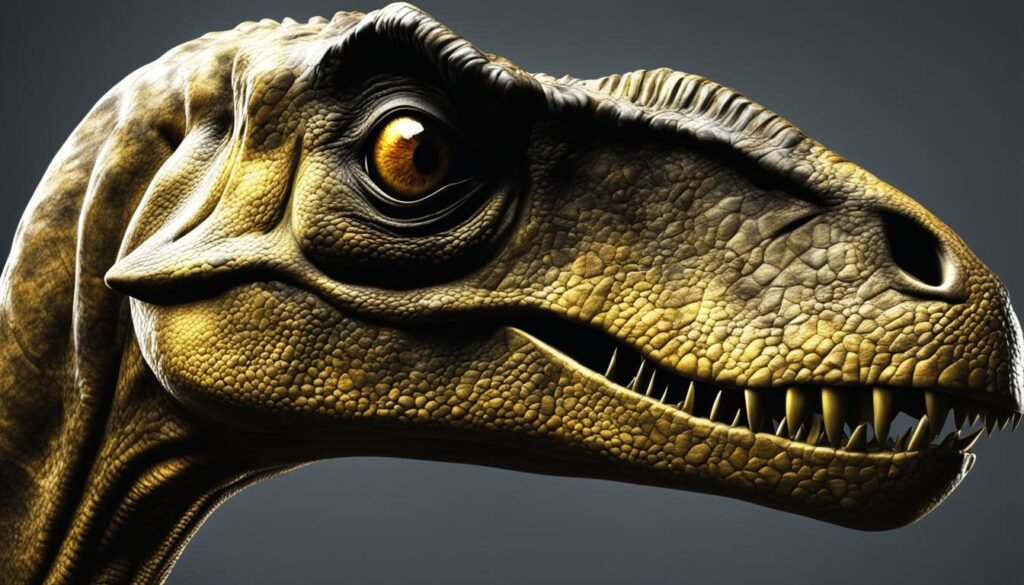
Table: Dinosaurs with Parietal Eyes
| Dinosaur Species | Parietal Eye Present |
|---|---|
| Velociraptor | Yes |
| Archaeopteryx | Yes |
| Stegosaurus | No |
| Ankylosaurus | No |
Conclusion
The study of the Vision and Eye Structure of Dinosaurs offers a fascinating glimpse into the visual world of these prehistoric creatures. By analyzing fossil evidence and comparing it to modern animals, scientists have been able to uncover valuable insights into the diverse range of vision that existed among dinosaurs and how it influenced their behavior and survival in ancient times.
From the binocular vision of coelurosaurs like Velociraptor to the well-developed vision of Tyrannosaurus rex, it is clear that different dinosaur species had varying levels of visual acuity. Some dinosaurs, like Stenonychosaurus, were likely adapted for nocturnal vision with larger eyes and a higher density of rod cells for improved night vision.
The anatomical structures of dinosaur eyes, such as the sclerotic ring, pupil, iris, and fovea, were similar to those found in modern reptiles and birds. These structures provided protection, allowed for the regulation of light intake, and enhanced visual acuity. Additionally, the study of fossilized eye impressions has enabled scientists to estimate eye size and make inferences about the visual capabilities of different dinosaur species.
Overall, the research conducted in this field has deepened our understanding of how vision played a crucial role in the behavior, survival, and success of dinosaurs. While there is still much to uncover, the study of the Vision and Eye Structure of Dinosaurs continues to shed light on the remarkable adaptations and sensory abilities of these ancient creatures.

